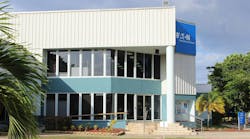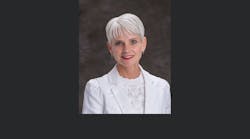Rebates. Energy grants. Stimulus funds. Financing options. Custom programs. Upgrade incentives. Never have so many funding options been available to electricity customers. Never has the U.S. legislative and economic landscape been so favorable to commercial, industrial and institutional end users who pursue energy-efficient lighting and electrical upgrades in their facilities. And never has the electrical market been better positioned to help deliver this value-added information and help end users capitalize on today's demand-side management opportunities.
A look back: the genesis of DSM
Many of the nation's electric utilities first introduced demand-side management (DSM) practices during the height of the oil crisis of the 1970s, when America's attention was focused on (and frantic over) the status of its precious and finite energy supply. Though seemingly at odds with a utility's goal back then of selling more electricity, utilities began offering product rebates and other incentives encouraging the use of more energy-efficient technologies. That's because in light of these concerns over energy resources, DSM was a significantly less-costly means of meeting the country's growing energy requirements than building new power plants. DSM remained very effective through the ensuing decades. A 1990s U.S. Department of Energy (DOE) analysis found that demand-side management measures — or activities such as load shedding or the installation of energy-efficient products that incentivize users to reduce their energy consumption or modify their patterns of usage — could meet as much as a third of our nation's electricity requirements.
Over the years, because of changing utility approaches to the market, utility balance sheets, competitive forces and legislative directives, the magnitude of utility DSM funds and programs has waxed and waned. But all experts agree we are now in a time of aggressive demand-side management activity and that the nation's utilities and state energy offices — supported by a proactive federal administration intent on enhancing our energy independence and boosting our use of clean and green energy — have never offered such a high level of funding or such a varied menu of options for every customer and need.
According to the Energy Information Administration's 2008 Electric Power Annual (the most current edition available) (see chart on page 41), the nation's 3,000-plus utilities spent a reported $3.7 billion on DSM activities in 2008, a 47 percent increase over the $2.5 billion spent in 2007 and an 81 percent increase over the $2.05 billion spent in 2006. Data collected by the Consortium for Energy Efficiency reveals that relative to 2008, U.S. utilities further increased their spending on energy efficiency programs by 43 percent in 2009. And the forecast is for continued growth of this trend, with a recent joint analysis by the DOE and Lawrence Berkeley National Laboratory predicting that these levels could double or even triple by 2020, potentially rewarding customers who pursue energy-efficient upgrades with up to $12 billion in incentives by the end of this decade.
A supportive legislative landscape
Without a doubt, the current legislative landscape has created a more favorable environment for DSM than ever before. Among other ground-breaking federal overtures, the following two pieces of energy legislation enacted in the past five years have paved the way for DSM and significantly expanded the financial rewards offered on energy-efficient initiatives.
-
The landmark 2005 Energy Policy Act offered unprecedented financial incentives in the form of tax deductions for commercial building owners who conduct qualifying energy-efficient upgrades over the thresholds set forth by the ASHRAE 90.1-2001 standard. Originally available for eligible technologies placed into service between Jan. 1, 2006, and Dec. 31, 2007, the Commercial Building Tax Deduction has since been extended through Dec. 31, 2013, and is helping to offset some of the cost of an upgrade and channel our nation's commercial buildings toward a more energy-efficient and sustainable future.
-
Driven by the Obama administration's desire to reduce America's energy consumption and costs and enhance our level of energy independence and global competitiveness, the American Recovery and Reinvestment Act (ARRA) signed in 2009 has been instrumental in making billions in new funding available for state and utility-sponsored energy-efficiency programs and other green initiatives.
“This is indeed an extremely robust and active time for demand-side management activity,” says Ed Legge, spokesman for the Edison Electric Institute, which represents roughly 70 investor-owned utilities that account for approximately 70 percent of the electricity currently sold in the U.S. “Driven by a very informed and proactive White House, green practices and DSM measures have finally entered the mass consciousness. As a result, the water level is increasing and all boats will rise with the tide.”
DSM comes into its own
Supported by current utility directives, the success of past DSM activities in reducing energy consumption, and the availability of new funding for energy-efficiency programs, DSM programs and product rebate opportunities are being offered by more entities and to a greater degree than ever before.
Leendert Enthoven is president of BriteSwitch LLC, a Princeton, N.J.-based company that specializes in securing and managing rebates, tax incentives and other financial rewards (primarily in the lighting arena) for commercial properties anywhere in the U.S. He says in 2008 his company identified 36 states that offered some level of funding for lighting upgrades, even if it was only in a small way. In 2010, BriteSwitch's data shows that organizations in 47 states are now actively offering incentives for lighting upgrades — 31 percent growth in national participation — and that the programs themselves are far more rich, generous and extensive.
Leon Mowadia, Jr., national accounts manager for the New Jersey office of Texas-based Facility Solutions Group, a national provider of electrical products, services, and energy management solutions, agrees. “We've seen utilities in states that have never traditionally offered rebates or incentives coming on board with programs for the first time, while many of the more active utility companies nationwide are introducing aggressive and creative new programs involving such offerings as immediate rebates and on-bill financing.”
“Utilities and other organizations that have historically been less active in the rebate arena, such as those in the South, are definitely coming on board quickly and making more and more money available,” says Enthoven of BriteSwitch. “While traditionally active utilities, such as those in the Northeast (Massachusetts, New Jersey and New York), northern Midwest (Illinois, Michigan and Wisconsin) and West (Arizona, California, Nevada, Oregon and Washington) are ramping up their programs even more than before and setting new program standards with respect to their magnitude, depth and quality.”
With commercial buildings in nearly 70 percent of the country now covered by some kind of utility rebate or other financial incentive, DSM has hit a new stride and is poised to help drive greater upgrade activity than ever before. According to Enthoven, popular lighting products that qualify for rebates from most utilities include T8 and T5 lamps, electronic ballasts, ceramic metal-halide technology, CFLs, occupancy sensors and induction lighting. He also says many rebate program standards are still being written for LEDs, and that they will represent a significant and up-and-coming opportunity.
While most utility rebate dollars and programs are currently associated with lighting because lighting upgrades are relatively easy to conduct and can deliver sizable savings quickly, other electrical technologies are making headway as well. Says Dave Hayward, Connecticut Energy Efficiency Fund program administrator at Connecticut Light and Power (CL&P), Berlin, Conn., “We have solid lighting programs, but also reward a broad range of other energy-efficient building envelope technologies such as variable-frequency drives, stack economizers, boilers, condensing units, chillers, wastewater treatment pumps and LED cooler lights as well as process improvements.”
A long-time leader on the DSM frontier and a provider of electrical power to more than 1.3 million customers in Connecticut, CL&P's approach to DSM is described by Hayward as “fuel neutral,” meaning the utility will consider any energy-efficient source that saves BTUs and will develop an incentive for it. CL&P, United Illuminating, New Haven, Conn., and Connecticut's natural gas utilities design and administer the programs of the Connecticut Energy Efficiency Fund, which ratepayer contributions support. The Energy Efficiency fund drives a variety of DSM programs that use incentives and low or no-interest customer loans to encourage energy-efficient new construction and retrofit projects in addition to hosting educational programs such as technology seminars for contractors and distributors.
“Because of the key role they play in helping to seed more energy-efficient technologies, we treat distributors like preferred customers and try to make the process easy for them — from understanding the technology itself to helping with the paperwork aspect — to encourage their greater participation,” says Hayward.
Results of DSM: The proof is in the pudding
According to the Energy Information Administration's 2008 Electric Power Annual, the money utilities have spent on DSM activities has not been in vain. The $3.72 billion spent in 2008 delivered energy savings of over 86 million megawatt-hours, an amount that could power the entire states of Missouri or Washington. The same study projects that while electricity consumption in the U.S. residential, commercial and industrial sectors will grow at an annual rate of just over one percent from 2008 through 2030, energy efficiency programs have the potential to reduce this growth rate to 0.83 percent per year from 2008 through 2030 and theoretically to as low as 0.68 percent per year under an ideal set of conditions.
Says Hayward, “Here in New England, where we have high population, congestion charges and restrictions on building new capacity, we clearly need to reduce energy demand, and DSM definitely works. Every dollar invested in a Connecticut Energy Efficiency Fund program results in approximately three dollars in electric and gas system benefits.
“With an expanding U.S. population that relies on an ever-increasing range of electrical gadgets like computers, cell chargers and other electronics often kept on in an instant-start mode, our energy needs continue to grow by leaps and bounds. We truly can't see a sunset on the opportunity for DSM incentives.”
All on their own, energy-efficient upgrades represent some of the most attractive investments in the marketplace today. And the current record-high availability of a broad range of DSM and other financial incentives further improves return on investment (ROI), reduces payback periods and provides an even more compelling reason for end users to pursue an upgrades. Distributors should familiarize themselves with their local DSM opportunities so they can deliver this value-added opportunity to their customers and secure their position in this upsell market.
Susan Bloom, a freelancer and consultant, is an 18-year veteran of the lighting and electrical industry. She can be reached at [email protected]
How Distributors Can Cash In on Today's DSM Opportunities
With their unique access to both their customers' installed technologies and energy consumption levels — combined with their role as energy and electrical product experts — electrical distributors are well positioned to help their customers capitalize on today's broad range of product rebates, financial incentives and other DSM initiatives. The following tips will help you tap into this vast opportunity and maximize your participation in the lucrative upgrade market.
Know your products
An understanding of the market's broad range of energy-efficient electrical technologies will help place you in an ideal position to recommend upsell opportunities to your customers and advise them of the rebates or incentives that might be available locally. Says Puesh Kumar, engineering and operations manager at the Washington, D.C.-based American Public Power Association (which represents more than 2,000 public utilities and about 16 percent of the nation's electricity sales), “Commercial and industrial customers account for a major portion of the electricity sold in the U.S. and can make significant strides towards reducing our national consumption by improving usage of their energy load. As a key conduit to these accounts, distributors should consider it part of their responsibility to help their customers understand the energy-efficient technologies that could benefit them.”
In addition to information made available by the various product manufacturers, distributors can learn about new technologies by attending educational seminars that utility representatives, state energy offices and trade associations sponsor.
Familiarize yourself with your local utility and their DSM programs
If you haven't already done this, introduce yourself to your local utility's DSM experts and find out about the utility's programs today. A great online resource to learn about the latest updates to utility rebate programs is www.dsireusa.org. Established in 1995, the Database of State Incentives for Renewables & Efficiency (DSIRE) is an ongoing project of the North Carolina Solar Center and the Interstate Renewable Energy Council (IREC). It's funded by the U.S. Department of Energy's Office of Energy Efficiency and Renewable Energy (EERE).
BriteSwitch President Leendert Enthoven believes the opportunity to deliver information on a utility rebate or program creates productive grounds for a distributor to call on a customer, differentiate himself and improve his mix and margins. As programs can change based on funds available or market response levels, it's beneficial to stay in close contact with the utility so you can provide your customers with the most current program details and expiration dates. Says Dave Hayward of Connecticut Light and Power, “Our message to distributors is, ‘Call us early and call us often.’”
Be proactive and inquisitive about DSM programs
Utility DSM programs can take a variety of different forms, from prescriptive measures involving set rebates for the purchase of specific energy-efficient products to custom programs, shared savings plans, financing options and other creative approaches. While custom programs are not as clearly defined upfront as prescriptive measures are and subsequently require more interactive exchange with the utility, they can potentially be negotiated with the utility and may often result in more money for the end user.
Familiarize yourself with other local resources
In addition to your local utility, a variety of other resources exist that could provide financial incentives to help defray your customer's upgrade costs — including federal and state loans and grants — and many of these sources have recently been primed with federal stimulus funds. The National Association of State Energy Officials (NASEO), Alexandria, Va., also provides valuable information at its website, www.naseo.org, about how to contact your state energy office to investigate their offerings, and as mentioned earlier www.dsireusa.org is a great resource.
Enlist the help of specialized organizations
New, specialized companies like BriteSwitch are cropping up to help distributors and end users navigate through the details, paperwork, approvals, inspections and technology specs involved in applying for energy-efficient product rebates, loans, grants and custom programs. National in scope and chartered to help make the rebate procurement process easier for clients so they can benefit from energy load reduction opportunities and financial rewards, BriteSwitch works with distributors and end users to identify and recommend the appropriate green lighting technologies, negotiate and file for incentives and even prepare the appropriate but often confusing documentation required for the EPAct 2005 Commercial Building Tax Deduction.
Says BriteSwitch's Enthoven, “We're set up to handle this level of detail so end users and distributors can enjoy the rewards of their upgrade while they focus on what they do best — running their businesses and serving their customers in the highest way possible.”








